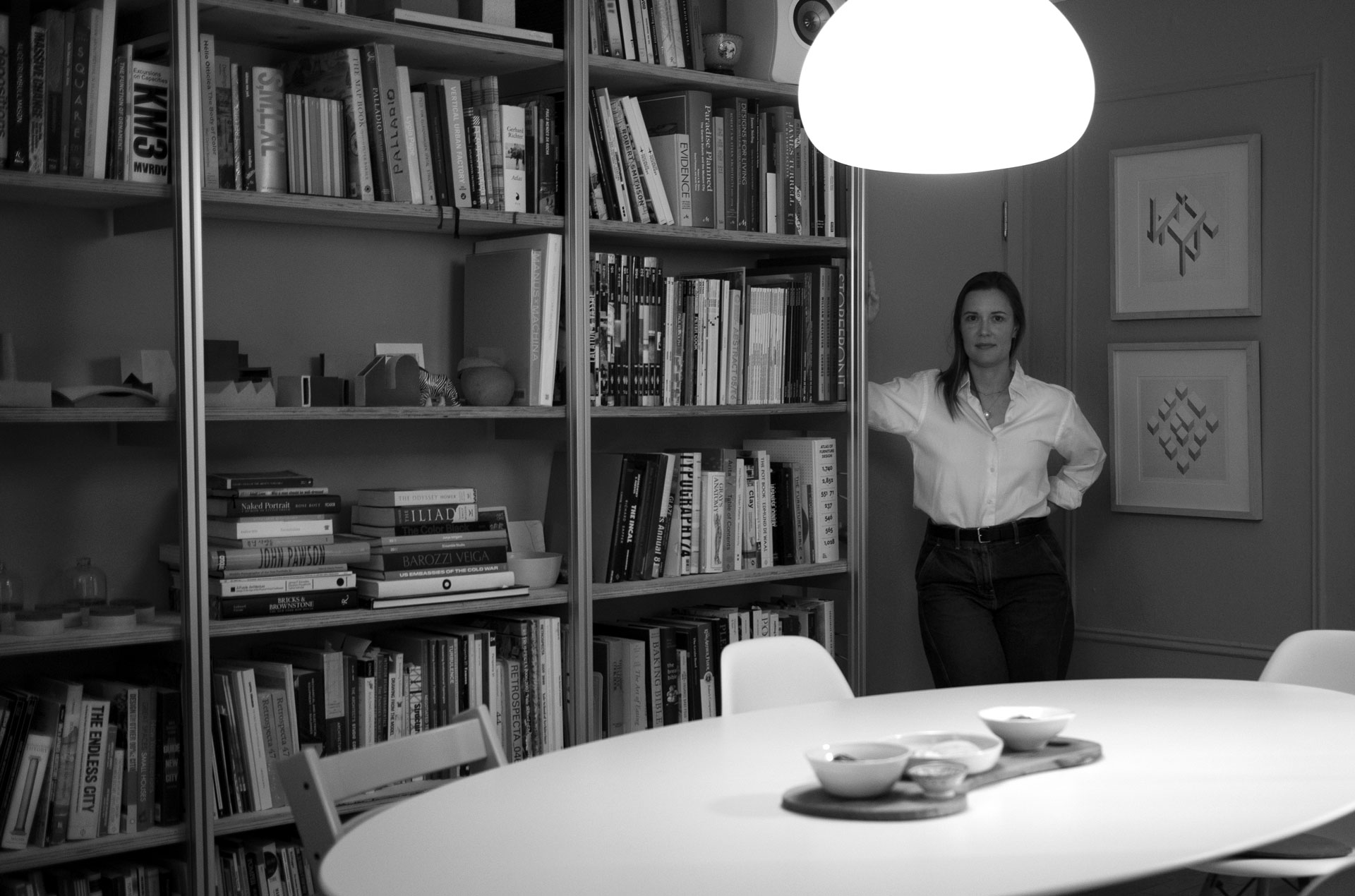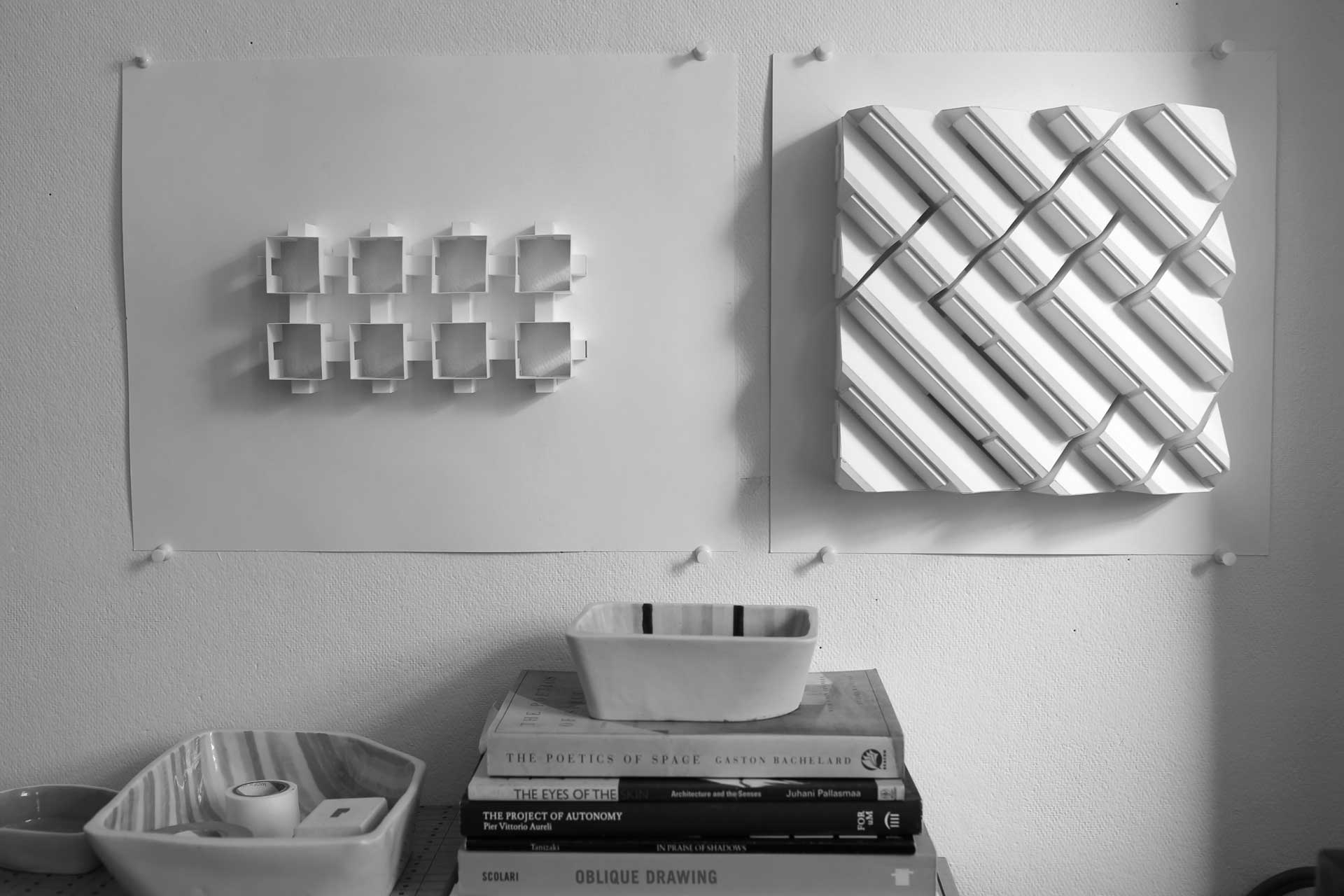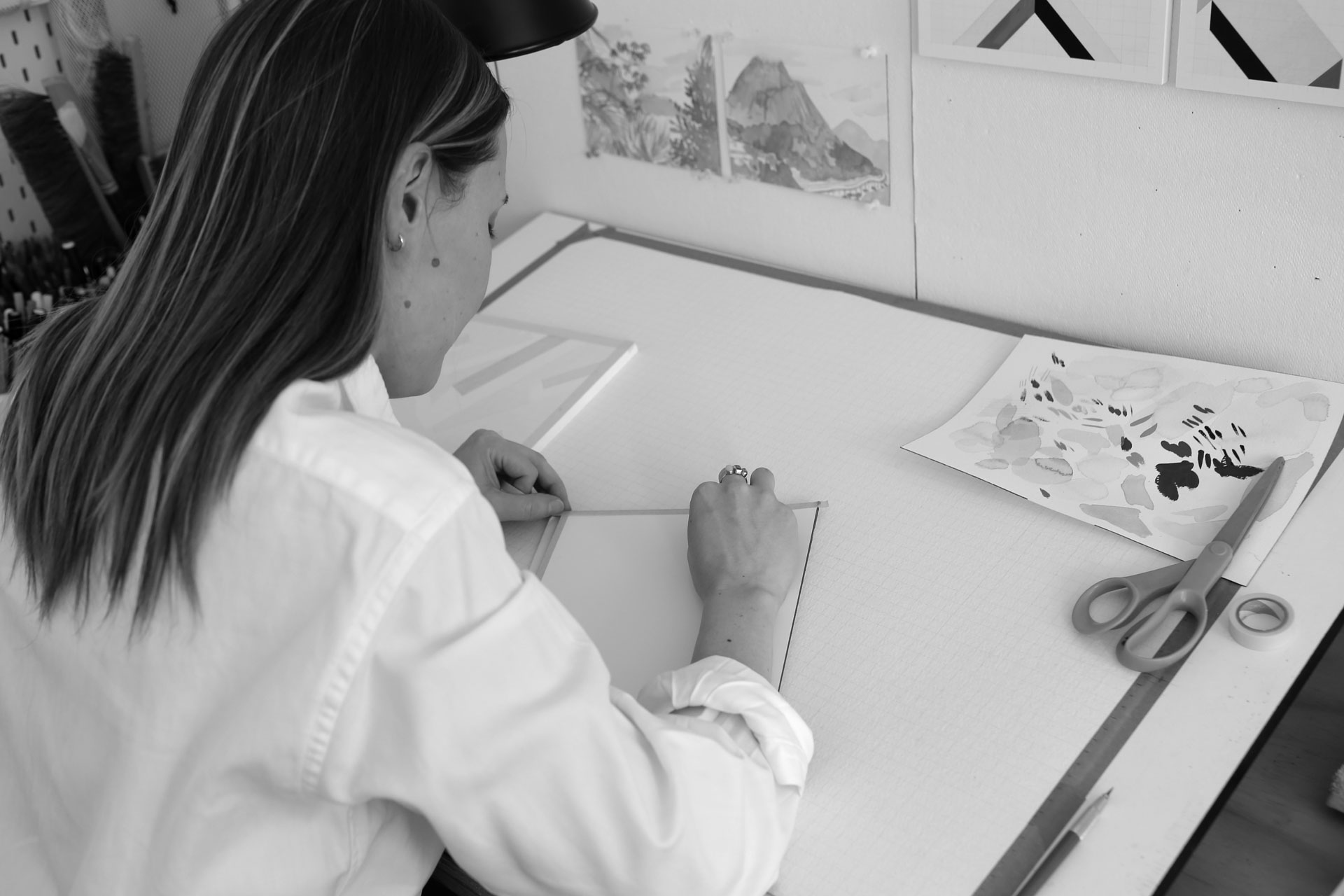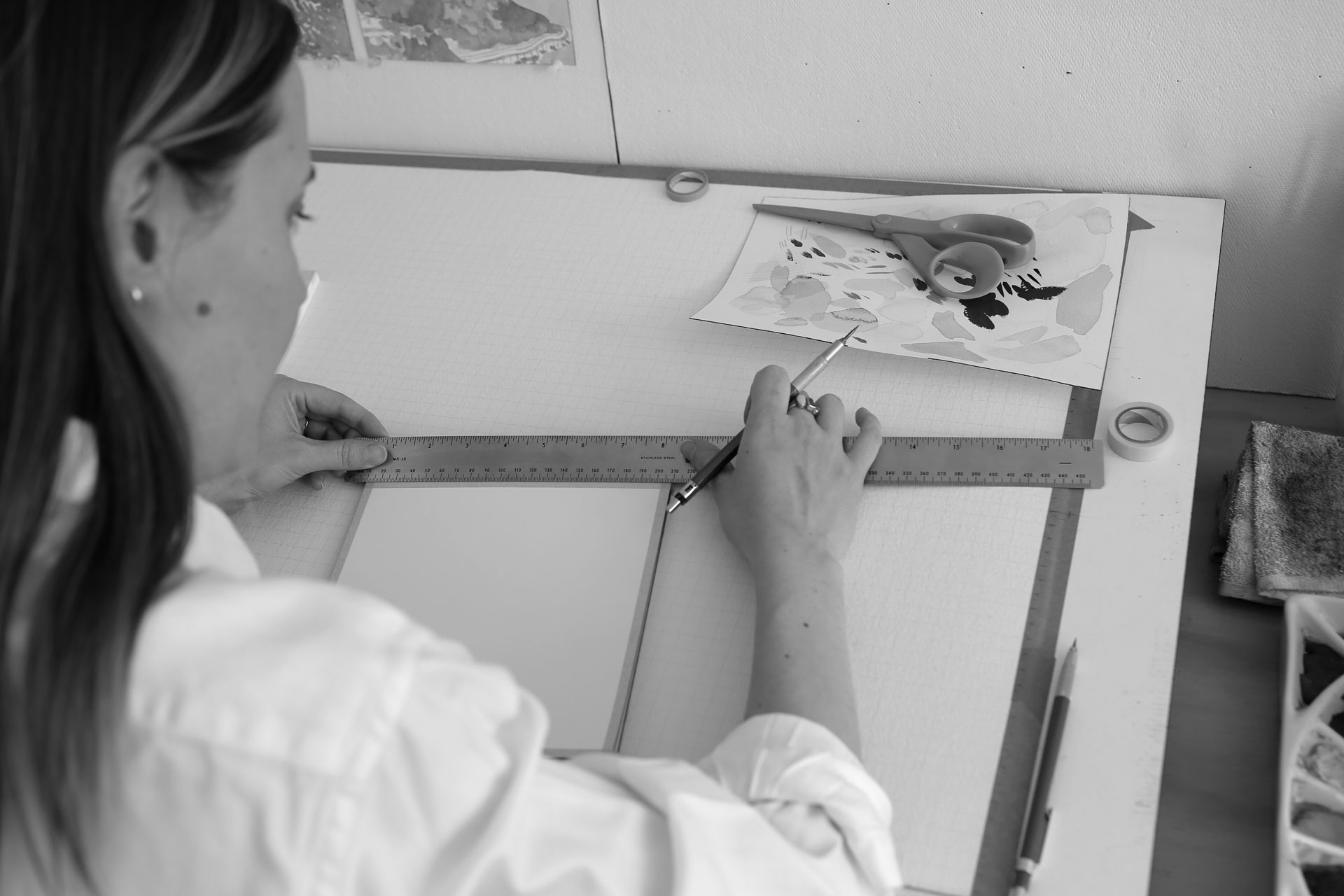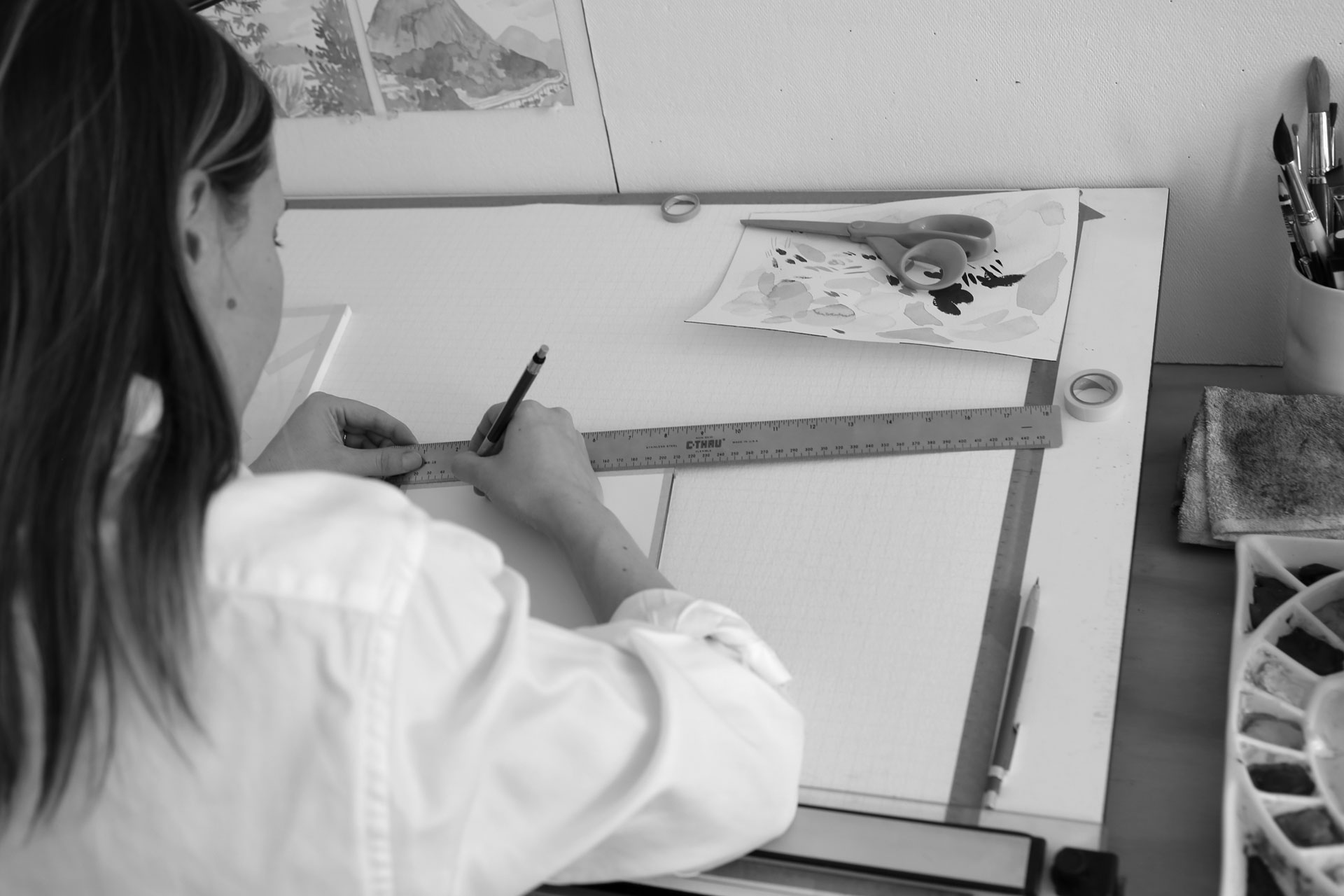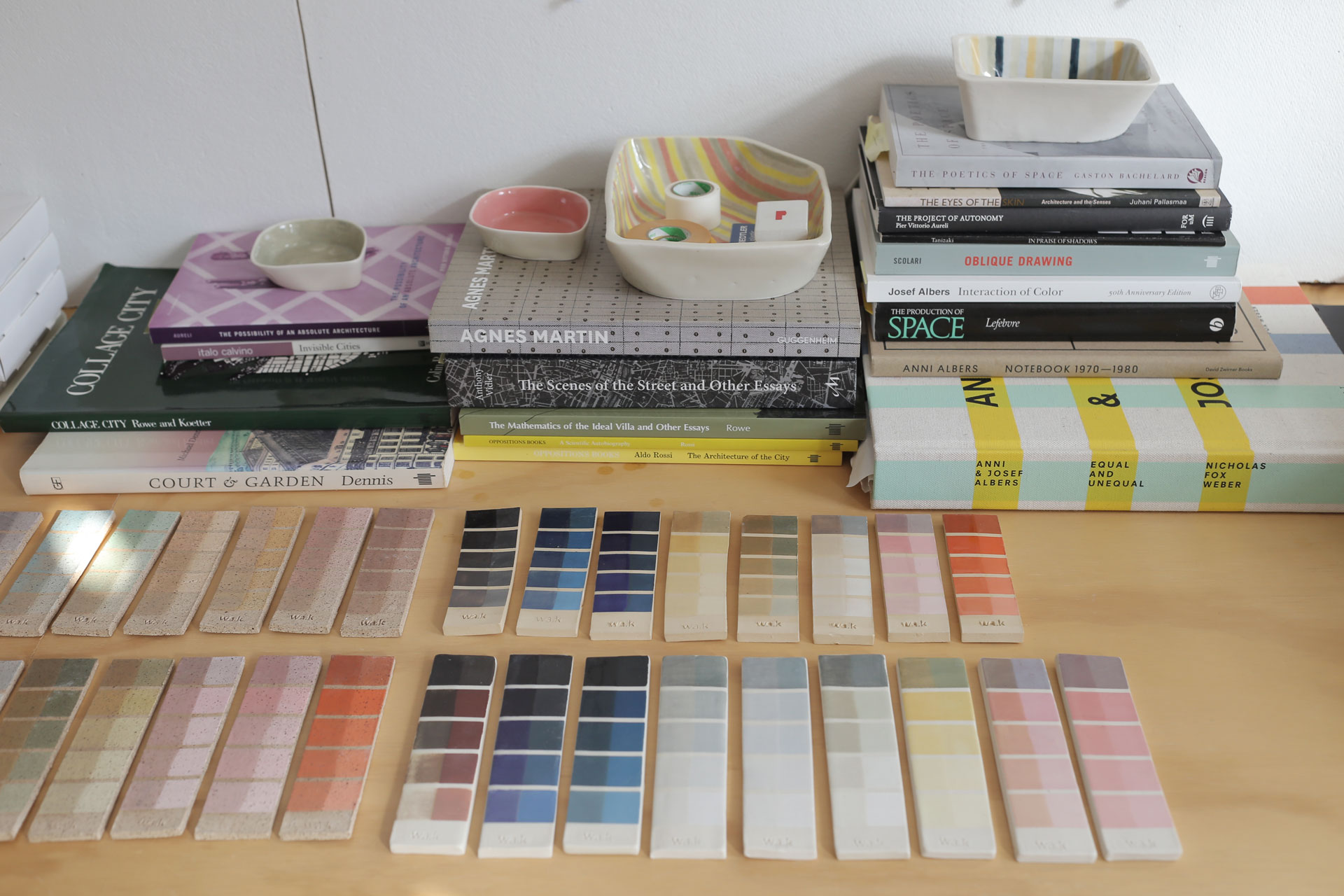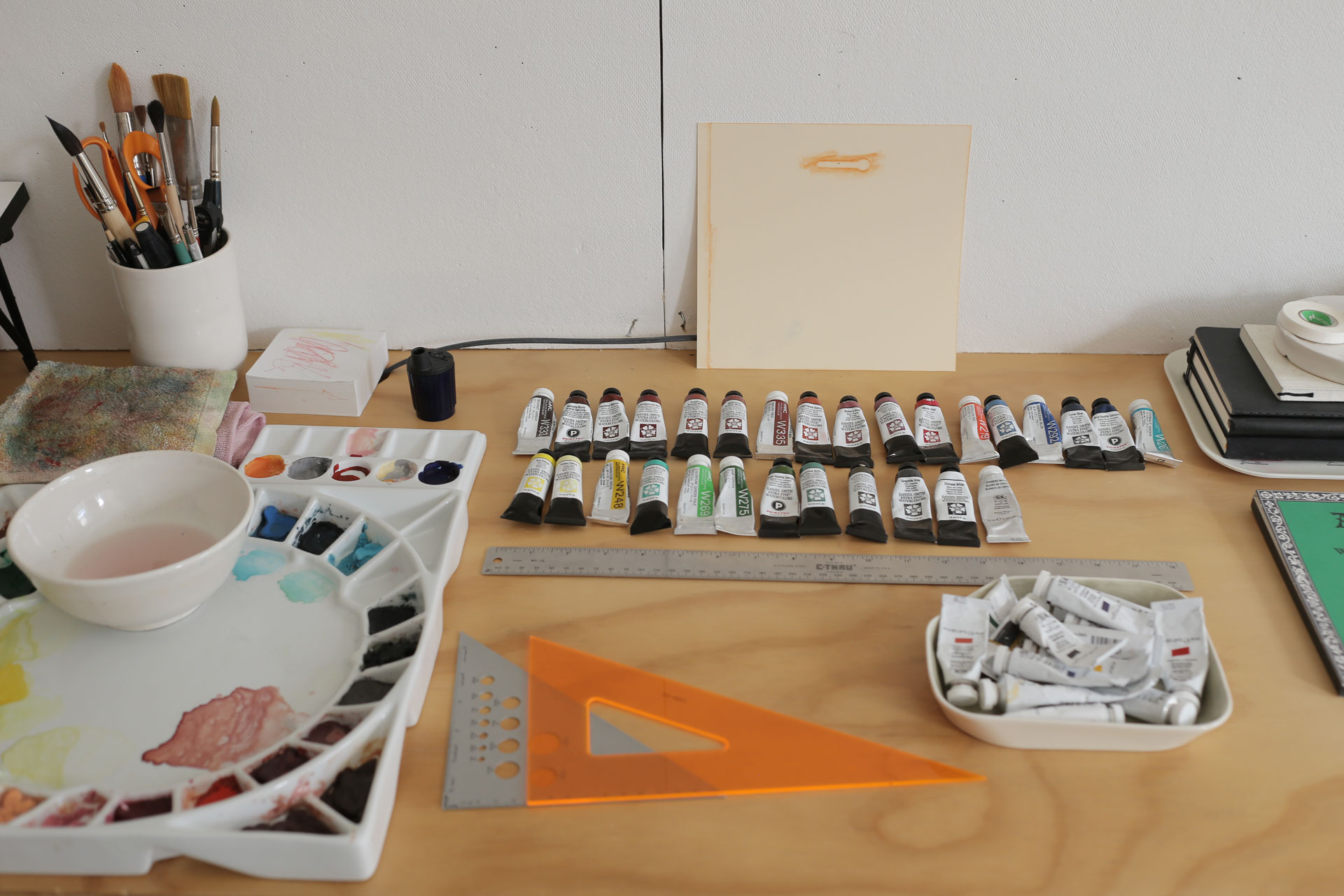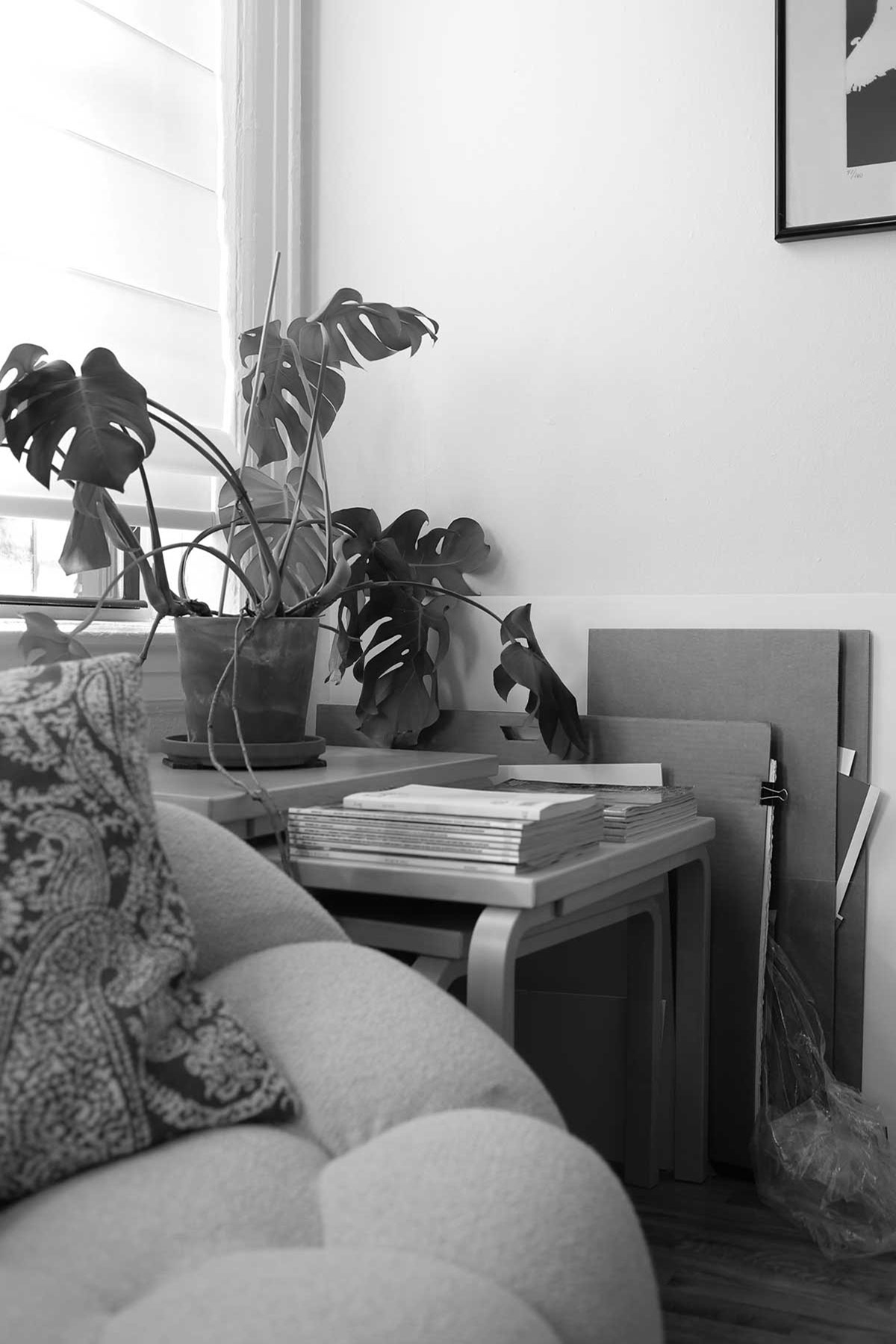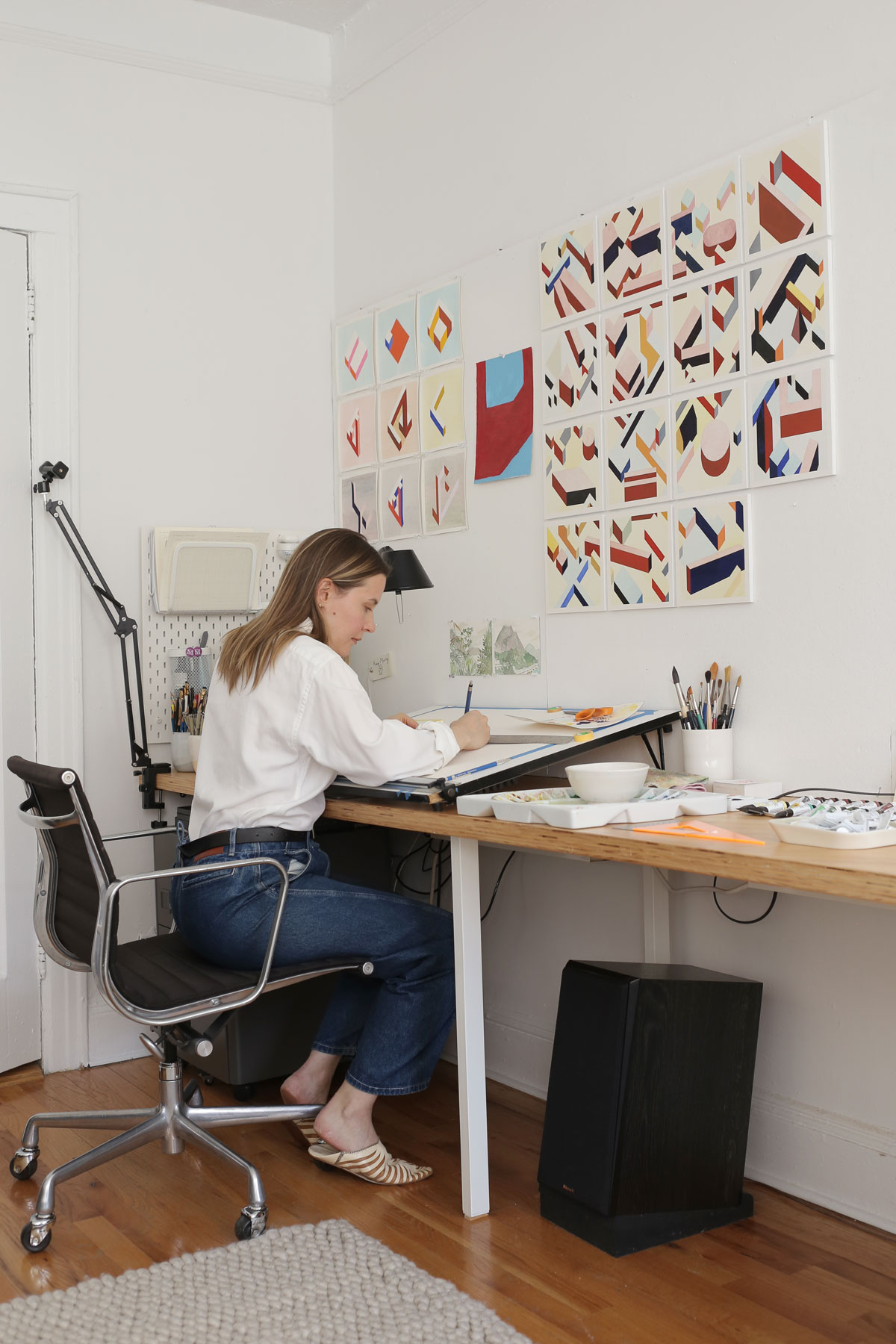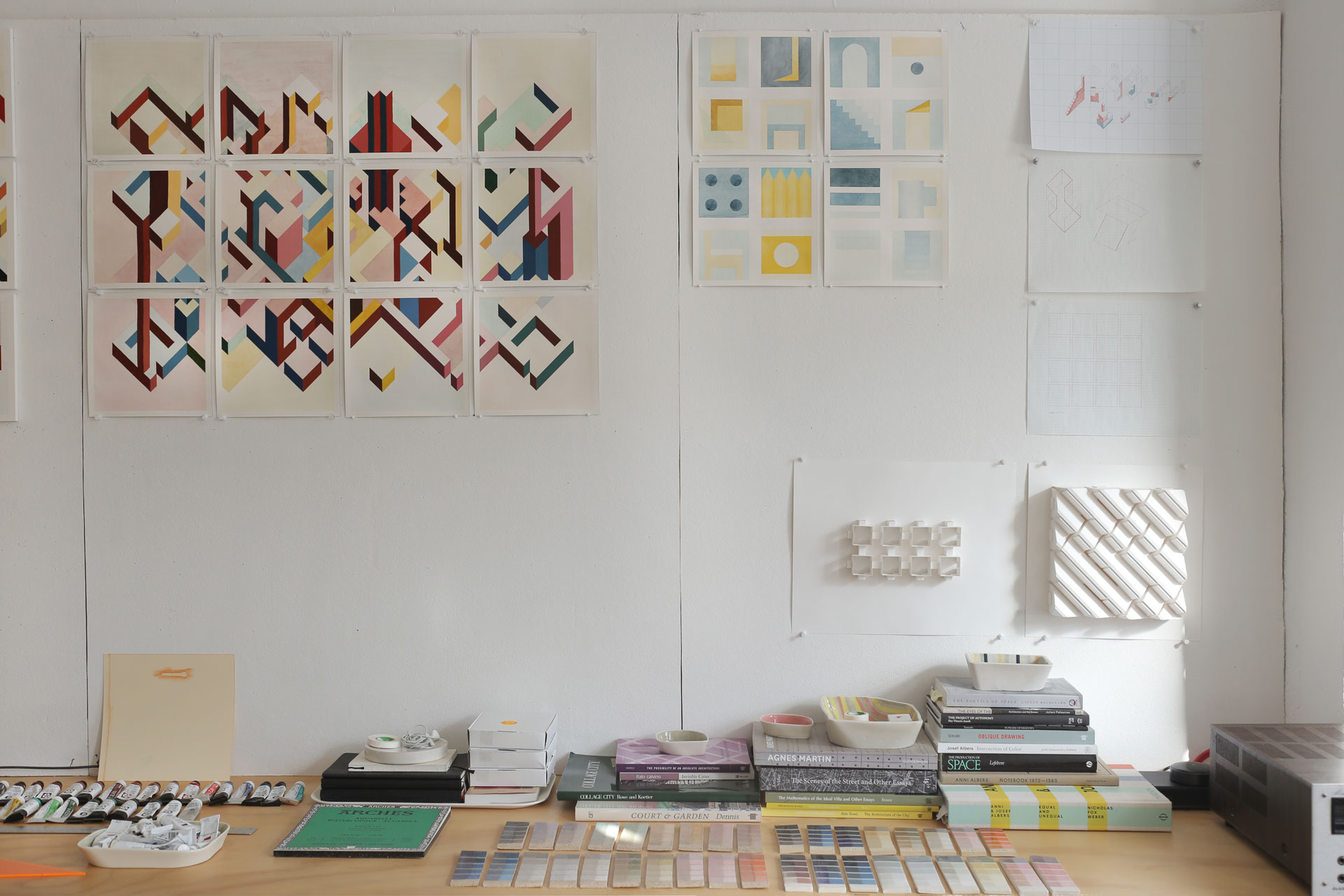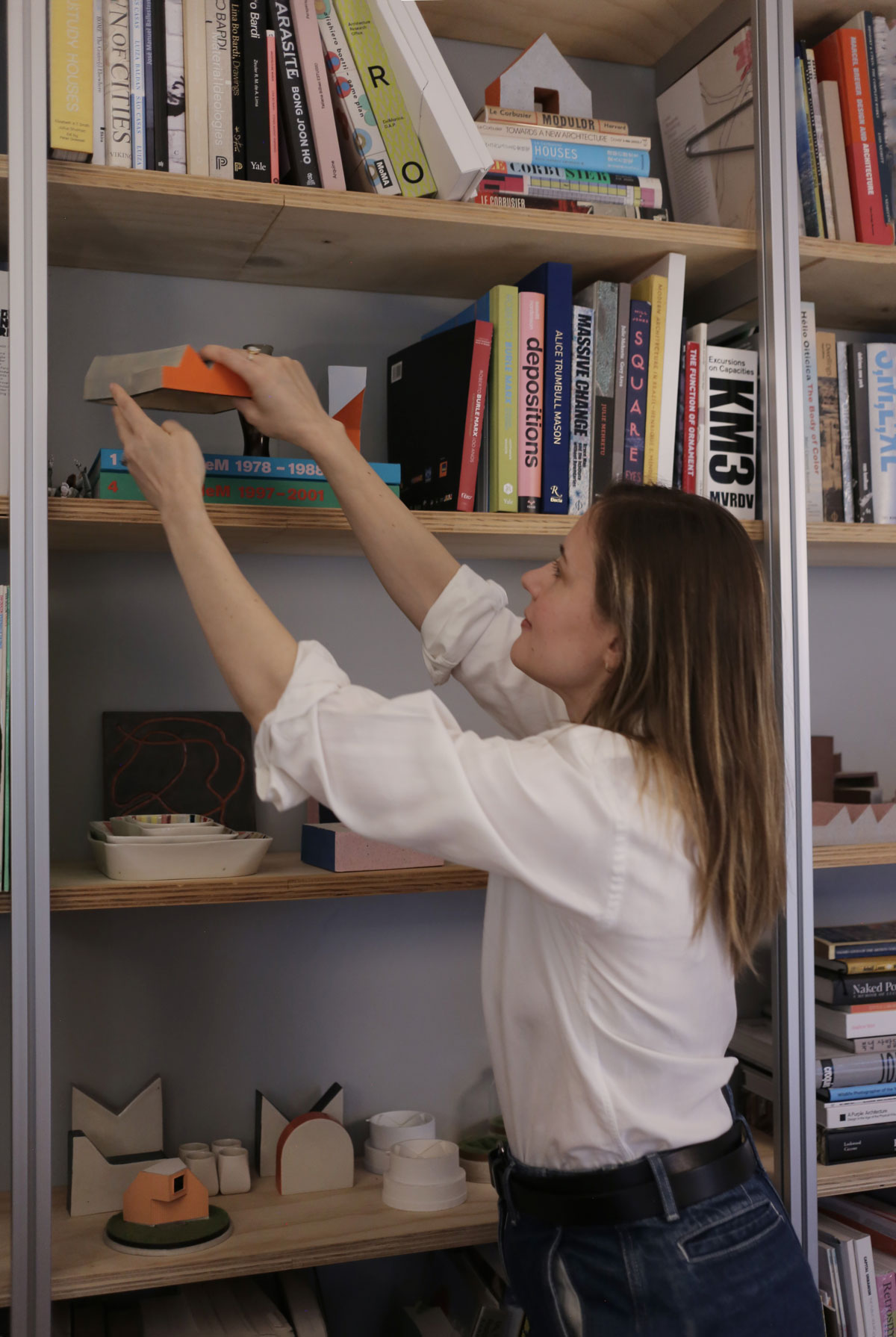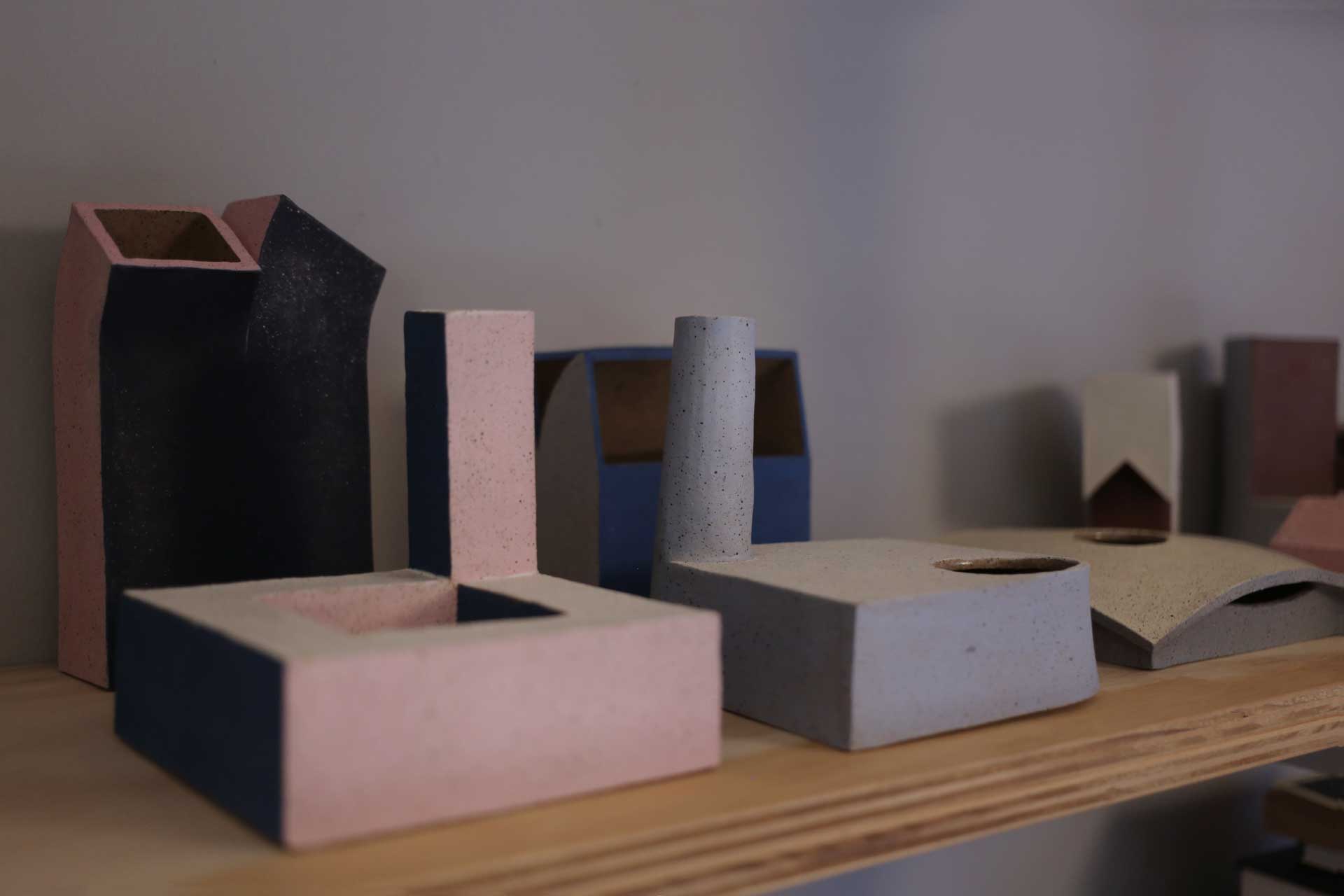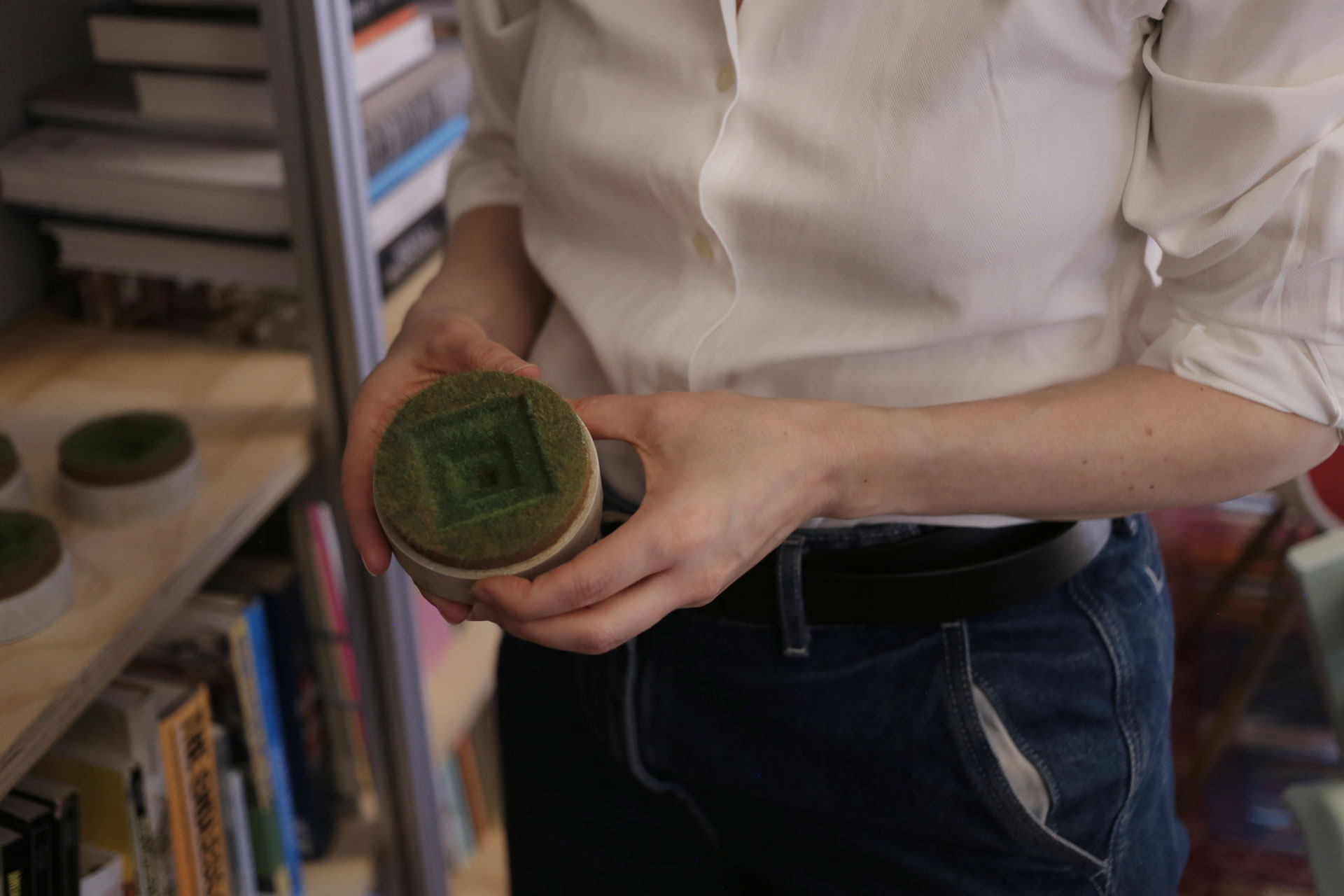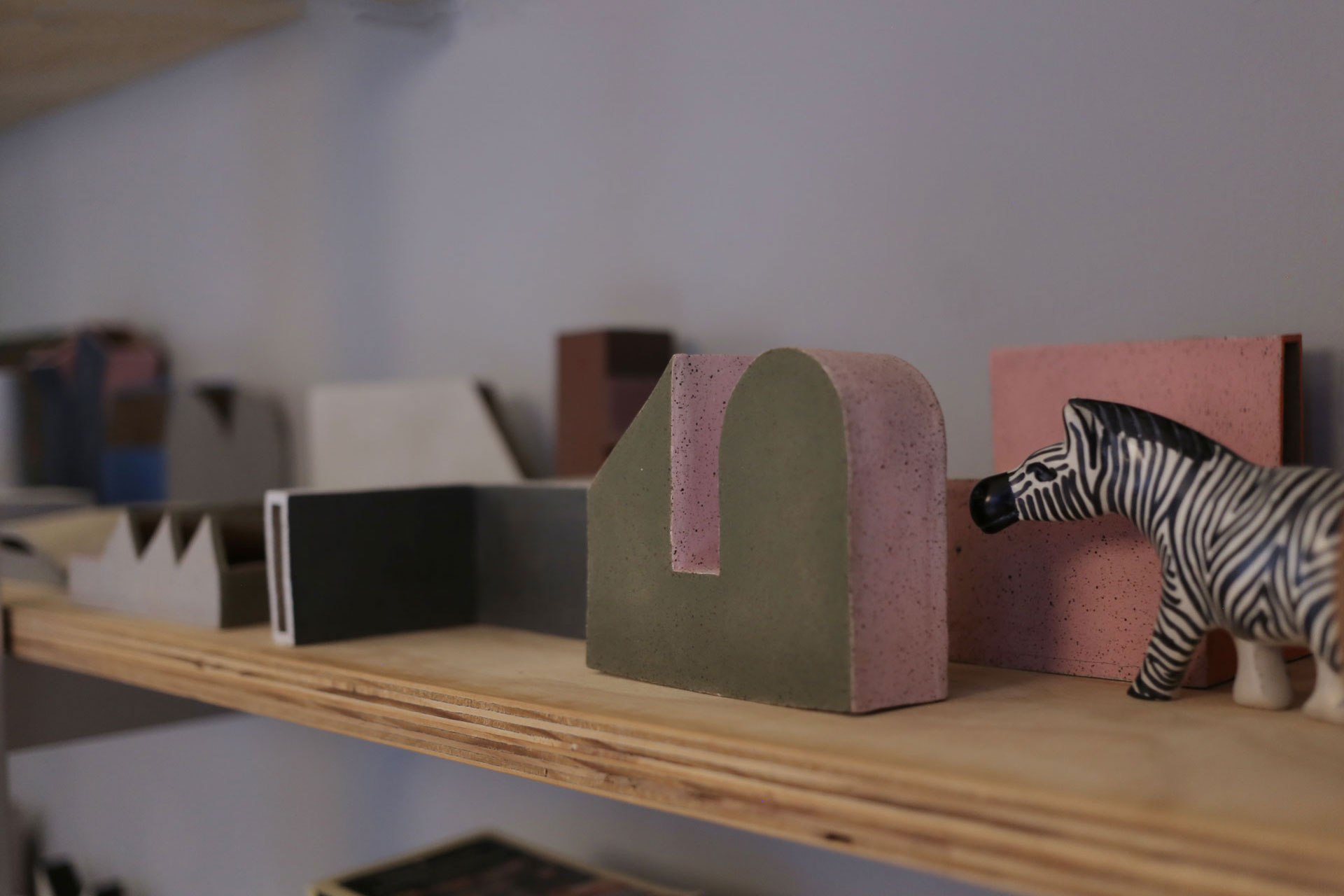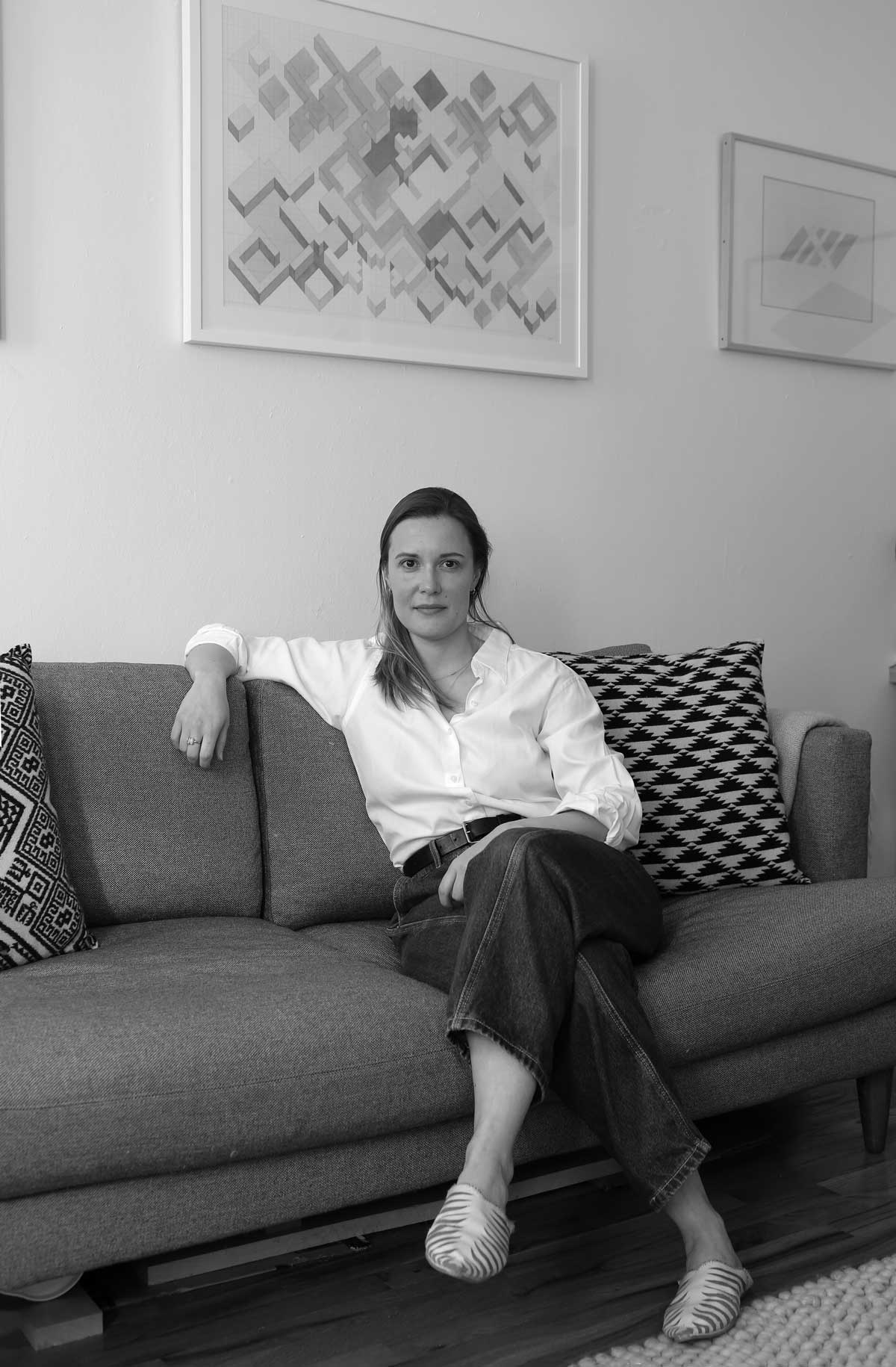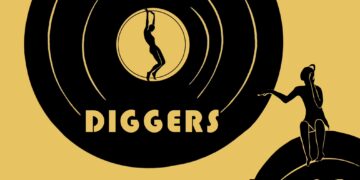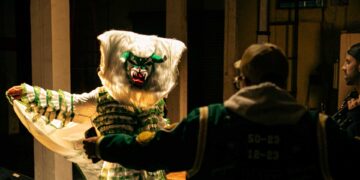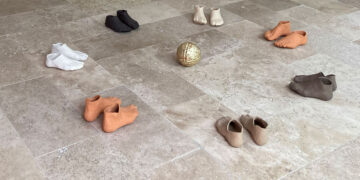Every man carries within him a world, which
is composed of all that he has seen and loved,
and to which he constantly returns, even when
he is traveling through, and seems to be living in,
some different world.
– François-René de Chateaubriand, Travels in Italy, 1828
Having grown up in seven cities across continents, with shorter stays in many more places, my experience of the world is inherently urban. The shifting landscapes of my childhood were both disruptive and revelatory, exposing me to cities in constant transformation. The rational forms of Brasília, suburbs of Washington D.C., pre-dot-com San Francisco, the dense fabric of medieval Lisbon, London at the turn of the millennium—each of these places left a lasting imprint, accumulating like a personal cabinet of curiosities. In response to the instability of movement, I turned toward control: tight grids form the foundation of my paintings, a structured language through which I process place and memory.
At home, I am always reading, often immersing myself in historic maps. Lately, I’ve been obsessed with Pirro Ligorio’s maps of Rome—drawings that reconstruct an ancient world while shaping our understanding of the present. I look to the past to arrive at the present. This process of discovery, of layering time and place, is central to my practice. Like maps, my paintings unfold as a continuous field, each one belonging to a larger whole.
I believe deeply in the physicality of making, in the tactile engagement between hand and material. When I work, I try to stay off devices as much as possible, allowing for slowness, precision, and intuition. Each painting begins with a hand-drawn grid, a base from which form emerges. My color palettes are drawn from the cities of my past and shift with the seasons.
My studio exists within my home, at once part of and apart from the domestic sphere. The mental separation is one I must carve out for myself—I work in the evenings or on weekends, in fleeting moments, all while sharing space with my three-year-old son. I contemplate my works in progress as I play on the floor with him.
My studies led me to Manhattan, a city defined by its rigid grid but animated vertically by its building fabric—an ordered framework containing lived chaos. Like the Roman city, the modern metropolis unfolds in layers, where growth, unexpected adjacencies, and overlapping histories define the urban experience. I am most interested in this tension between control and the unpredictable.
Alongside my partner, Beom Jun Kim of wa.k studio, I developed a series of ceramic objects called Polis, a project that transformed my two-dimensional explorations of form and color into three-dimensional space. These objects combine and recombine, creating small cities. The process of working in clay—of shifting between painting and sculpture—became a way to test ideas about space and structure at an intimate scale. With clay, I enjoy the challenge of achieving precision in what is inherently an imprecise medium.
My background in architecture informs my approach. I borrow from architectural drawing techniques—the drawing board, lead pencils, parallel lines—to construct my compositions. I see my art and architectural practices as deeply intertwined—one nourishing the other, each offering a different way of seeing, structuring, and making.
Through my work, I am constructing a personal lexicon that exists between time and memory.
You can find out more about Letícia Wouk Almino at @leticiawoukalmino // leticiawoukalmino.com
Photos: Anita Goes

